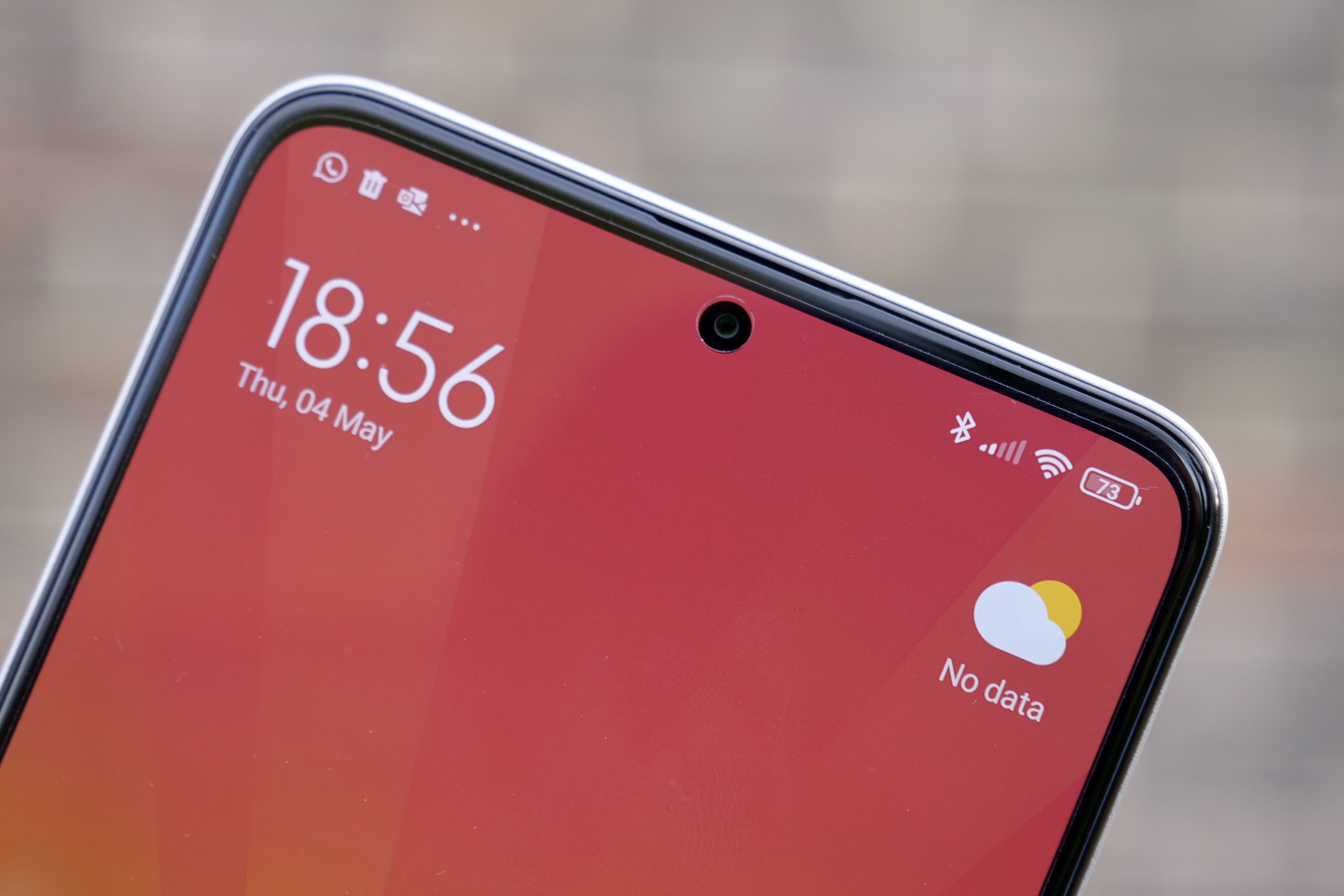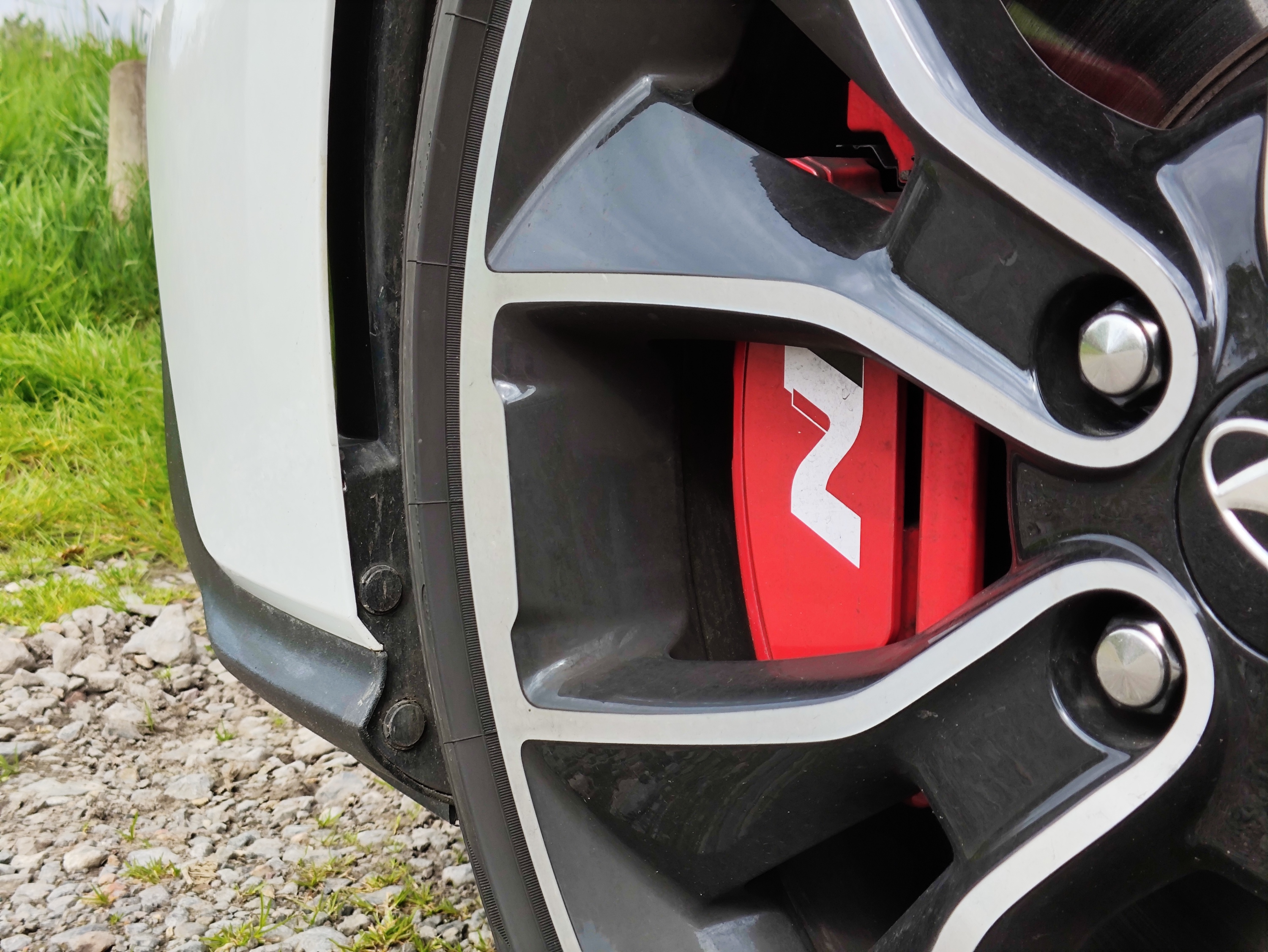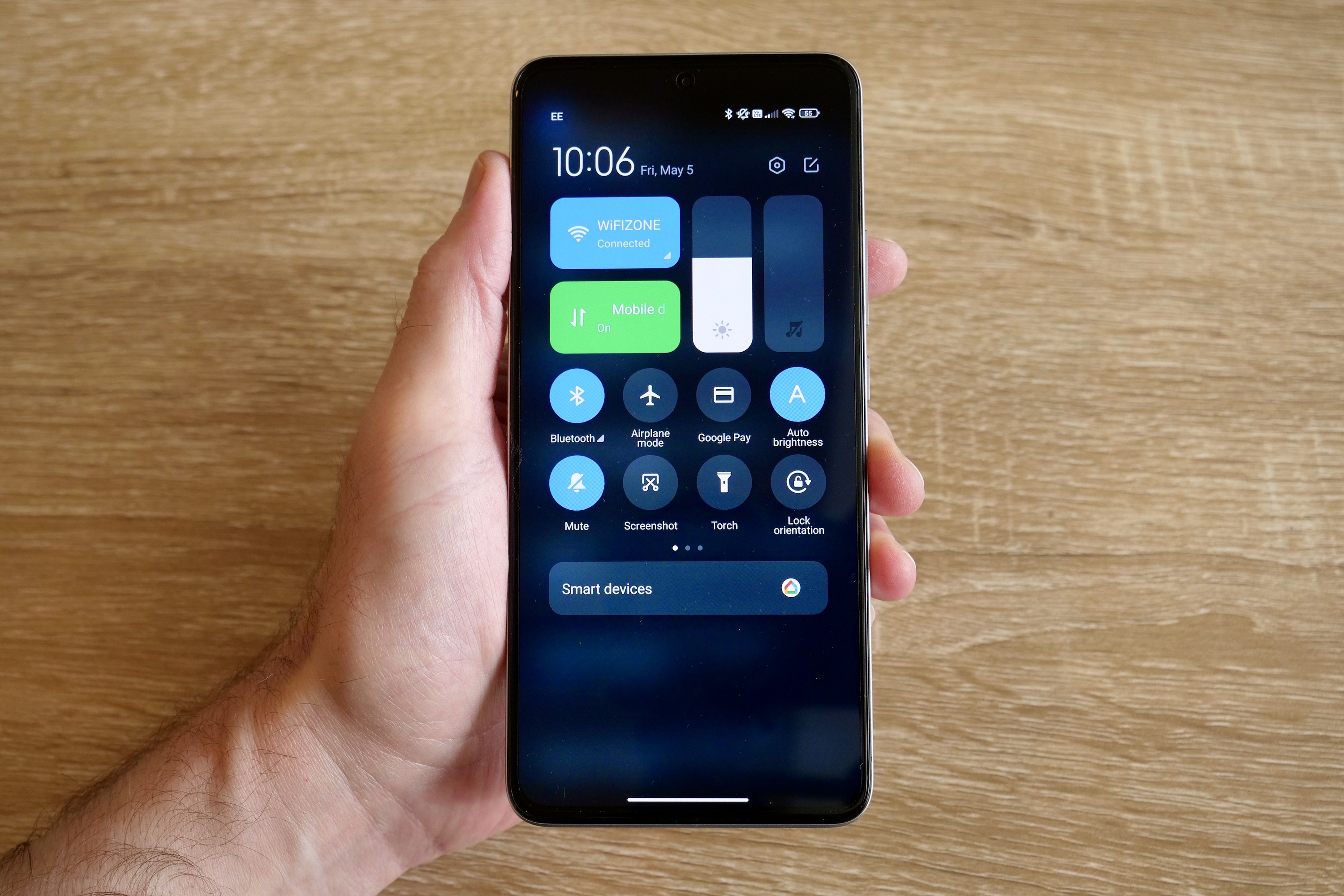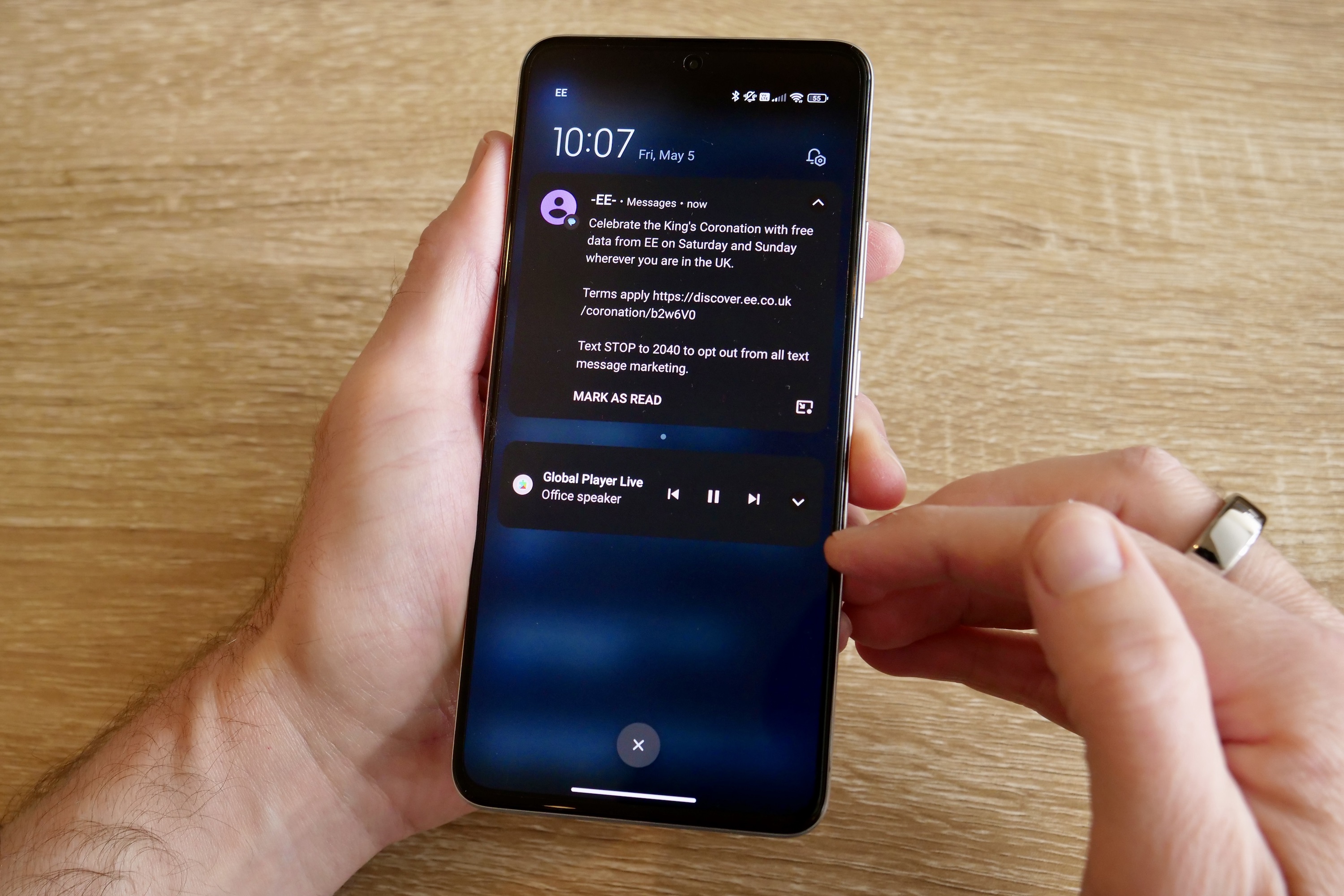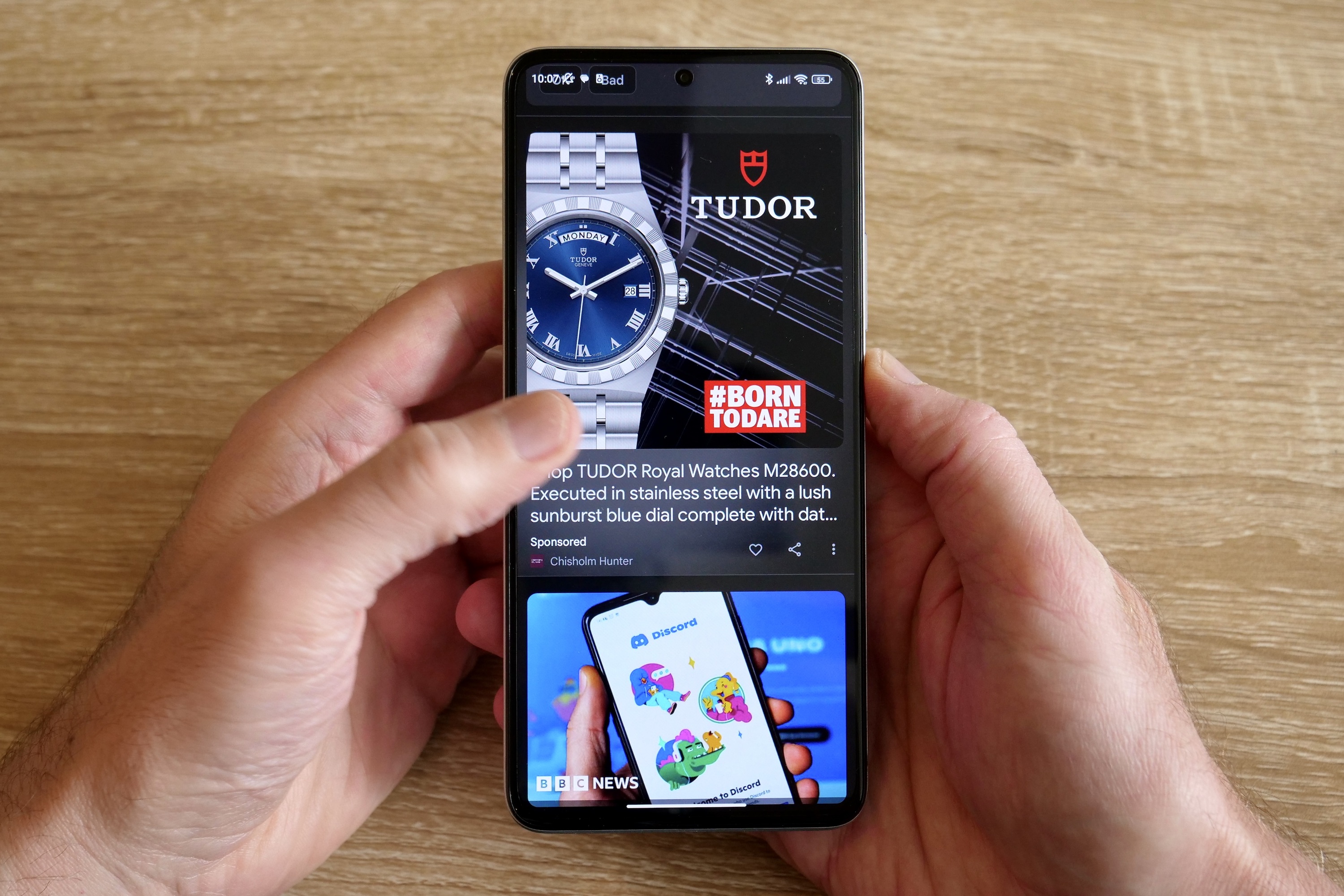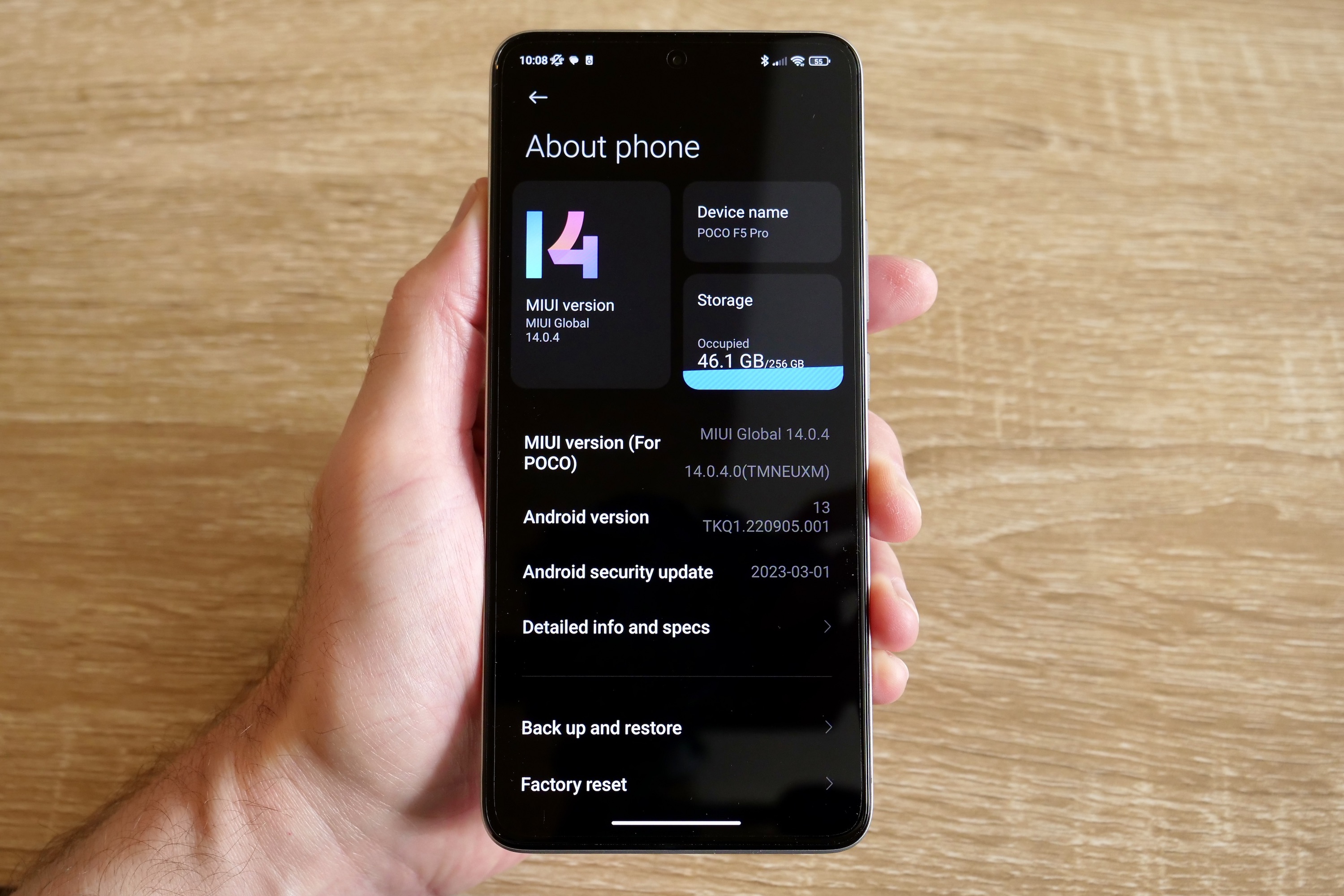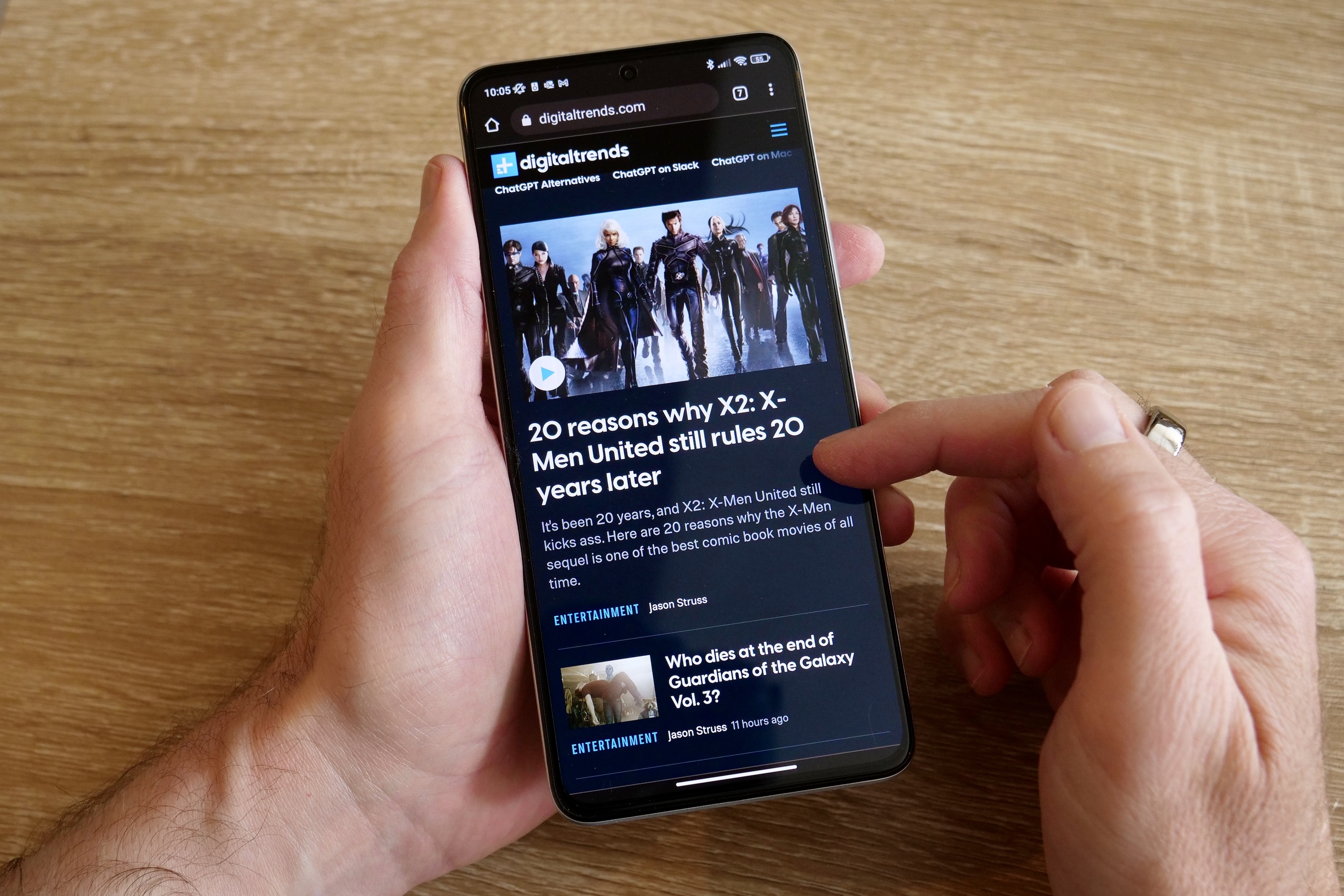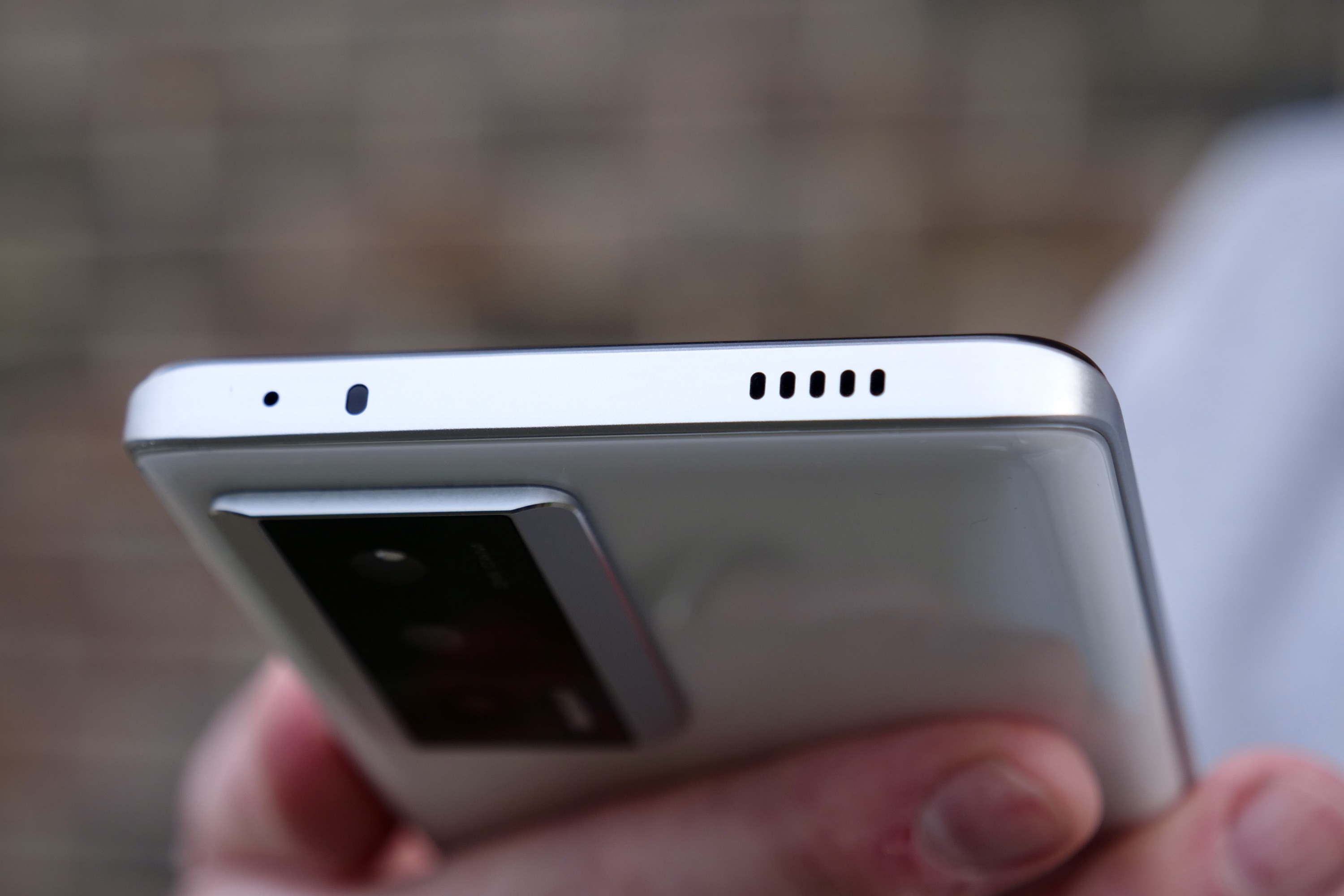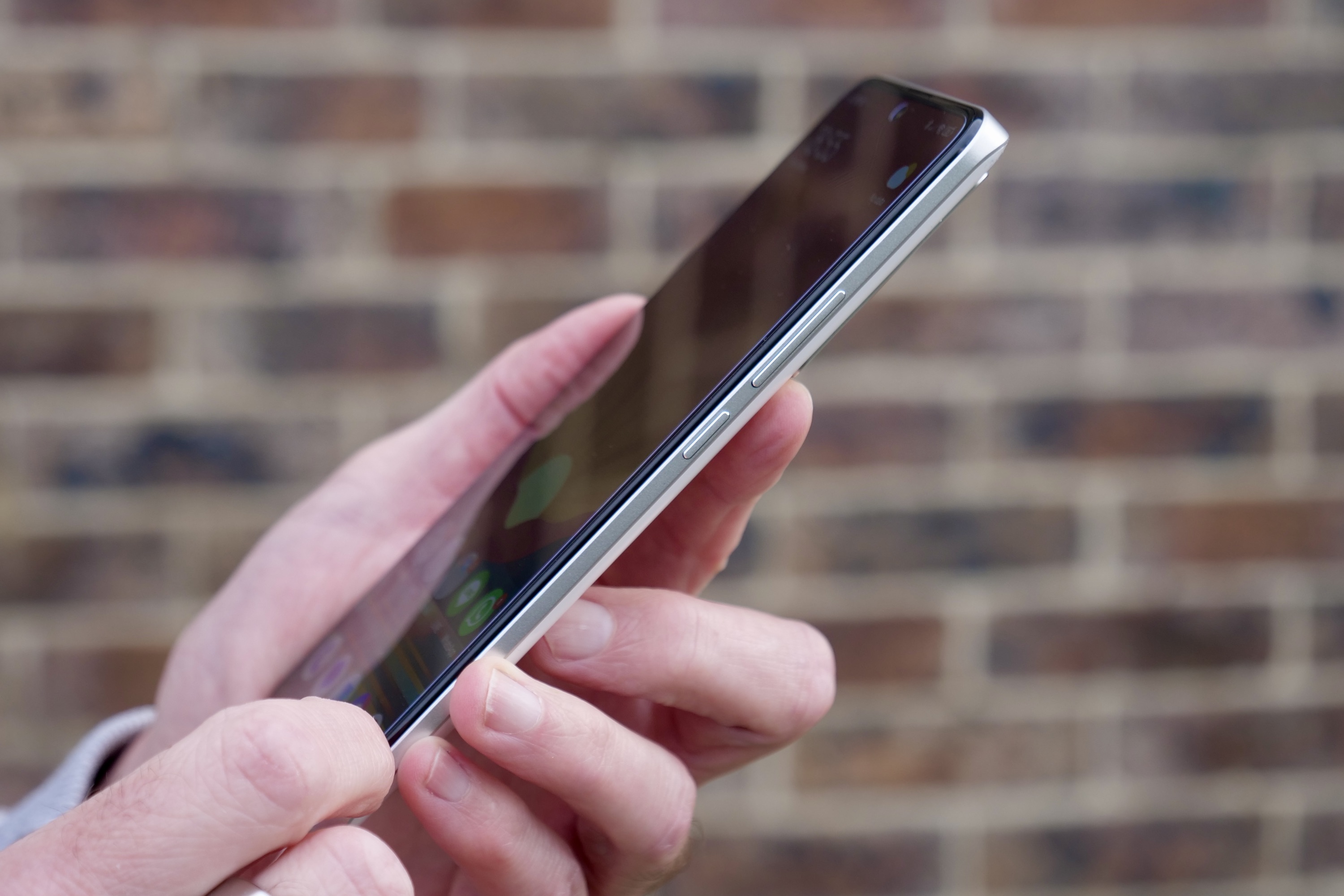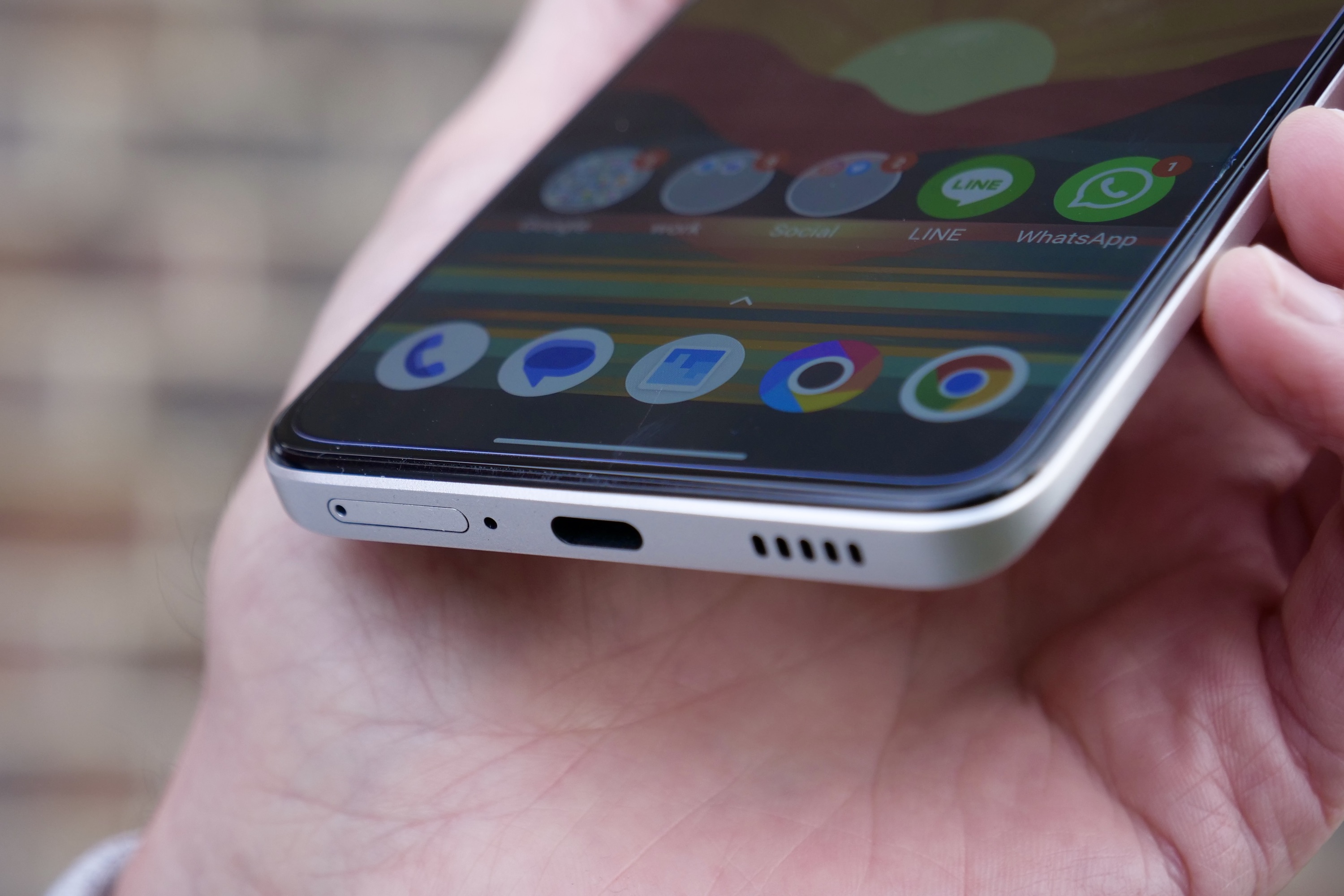“The Poco F5 Pro has a great spec sheet, at least two-days battery life, and a decent main camera — but it lacks a true reason to buy.”
- At least two days' battery life
- Main camera takes fun photos
- Fast wired and wireless charging
- Software lacks polish
- Design lacks appeal
There are some phones that leave no real lasting impression at all, and I’ve been using one for the last week. It’s the Poco F5 Pro, and it’s terribly mature, sensible, and painfully ordinary. Does this mean it’s a bad phone? No, it has been perfectly reliable — and, without a doubt, the best Poco phone I’ve used. But the lack of character made me miss phones like the Google Pixel 7, which is one of its natural competitors.
It’s not that the Pixel 7 is vastly superior, but it’s more about the allure of living dangerously since we’ve seen the Pixel could decide to be “exciting” at any moment. While using the F5 Pro, I’ve missed the crazy lights on the back of the Nothing Phone 1 in the same way. The thing is, I’m used to Poco making brightly colored, recognizable phones or ones that have crazy magnetic shoulder buttons — not phones like the F5 Pro. Without some silliness, I don’t get the Poco brand at all. Let’s get into the F5 Pro a bit more.
The problem with Poco’s design

The F5 Pro is Poco’s highest specification device to date, as the brand is more known for mid-range hardware with flashy features sold at a competitive price (and aimed at young people wanting a fun, eye-catching phone).
The F5 Pro is not like that. The glossy white back panel is classy and expensive-looking, the glass camera array is encased in a slanted, brushed metal module, and the phone comes in black or white without a hint of retina-searing yellow in sight.
It’s nearly 9mm thick, it weighs 204 grams, has an IP53 water and dust resistance rating, stereo speakers that sound good, and a reliable in-display fingerprint sensor. It’s only Gorilla Glass 5 over the screen, which is fine, but it’s a shame the glass is flat. I know some people don’t like curved glass, but it’s more comfortable to hold (when the chassis is well-designed), and it looks much better visually. The flat glass and simple rear panel make the Poco F5 Pro a bit boring to look at.
This is where Google succeeds with the Pixel 7. It looks excellent, with evidence of real thought in the design and a recognizable camera module that has become the “face” of the Pixel range. It’s the same situation with the Nothing Phone 1, a mid-range phone you’ll never mistake for anything else. The F5 Pro is a phone, but not a Poco phone, and that’s bad news. Without a hint of silliness or an attempt to be interesting, its strengths risk being ignored.
This is further compounded by its close family. Poco is a sub-brand of Xiaomi, and the trouble is that sensible Poco joins sensible Redmi, the other sub-brand of equally sensible Xiaomi. At least when Poco was a bit mad, it made sense as a separate brand. But now, I don’t know why I’d choose it over another phone from Xiaomi’s family. Worse, without some individual identity in the design, it doesn’t look much fun next to the more eye-catching Nothing Phone 1, Galaxy A54, or the Pixel 7.
It’s a good camera, but that’s not enough

It’s a 64-megapixel main camera on the back, and it’s really the only one you need to pay attention to, as it’s joined by a pointless 2MP macro camera and an often disappointing 8MP wide-angle camera. The one good thing about the main and wide-angle combination here is the consistency of color, as both cameras take similar-looking images. That doesn’t always happen, so it’s good to see.
The main camera is tuned in the way I’d expect from a Xiaomi phone, with strong colors and heavy-handed saturation, but this does give photos a fun and vibrant tone. It also makes them great for sharing online, as in the right environment, they really pop. There’s no optical zoom, but the 2x mode in the camera app isn’t a disaster at all, and the camera is even good in low light, avoiding too much smoothing out without adding masses of noise.
If you really examine the photos critically, then in some circumstances, it can wash colors out — but it’s not a dealbreaker on a phone like this. Remember, it’s not being billed as a camera phone. In fact, I don’t really know what it’s being billed as, which ends up being part of the overall issue. The camera is good, but not a reason to buy it over anything else, and without any effort to make it stand out (the 8MP wide-angle and 2MP macro are pure laziness), it’s just another part of the phone that’s merely solid.
We’ve moved past congratulating phones about a camera taking some good pictures. We expect phones to take good photos at this stage, and there really needs to be something beyond this to capture attention. Gimmicks aren’t the answer, but some effort to set it apart would help the F5 Pro no end.
Plenty of specs, but are they enough?

Maybe Poco is going for power to make the F5 Pro appeal? Many people value the basic specification over anything else, and the Poco phone doesn’t disappoint. The Qualcomm Snapdragon 8+ Gen 1 processor continues to be superb, not just brimming with power but also still impressing with its efficiency. It’s great here, paired with a massive 5,160mAh battery, which I’ve had running for almost three days without charging. That’s with about three hours of screen time each day and no gaming. Add some games and up the daily use to more than four hours, and two days is still easily achievable.
Oddly, Poco hasn’t pushed the F5 Pro as a gaming smartphone, despite the processor’s ability, the battery’s power, and the bright 6.67-inch AMOLED screen. The display is filled with tech, too, with a 120Hz refresh rate, 480Hz touch sampling, a 3,200 x 1,440 resolution, and a 1,400 nits peak brightness. When I’ve played games, they look and sound really good, and Asphalt 9: Legends delivers the speed and smoothness I expect. Video is sharp, colorful, and smooth, plus there’s Dolby Atmos to enhance the speakers.
There’s plenty more too. The phone has NFC for Google Pay, 5G, 30W wireless charging, and 67W fast wired charging. This adds 50% in 15 minutes and fully charges the battery in about 45 minutes. Poco has added a new LiquidCool vapor chamber to keep device temperatures in check, which also helps with its efficiency, and I’ve not had any issues with heat. I’ve not once picked up the Poco F5 Pro and lamented the lack of some crucial feature, but I have picked it up and wondered who would buy it.
I can live with the software, but it’s not my favorite interpretation of Android 13. Poco uses a slightly customized version of Xiaomi’s MIUI 14, with different icons and some brighter colors, but it seems to work in the same way. This means you get a lot of feature suggestions in the notification shade, various pre-installed apps, some system instability, and the hateful split pull-down menu where it’s notifications on one side and quick settings on the other.

It’s not as slick as Android on a Pixel and not as mature or visually pleasing as Android on the Galaxy A54, but if you can forgive the slightly childish color scheme, it’s fine. What it’s not is unique, as it’s not that different from MIUI on a Xiaomi or Redmi phone, and you can easily customize it to look exactly like it if you want. If you choose a phone by ticking spec boxes on a list, then the F5 Pro will probably satisfy, but outside of the processor, it’s fairly standard. It reminds me of phones like the OnePlus 10T, which appear to have everything you could want but don’t really do anything interesting with it.
Price and availability
The Poco F5 Pro costs $449 in its basic 8GB/256GB form, but if you’re quick to jump on it, there’s a $429 early bird price for a limited time. It’ll be released in the U.K., Western Europe, Central and Latin America, and parts of Asia. The price puts it up against the Samsung Galaxy A54, the Google Pixel 7, and likely the Google Pixel 7a too.
I don’t know who Poco is

The Poco F5 Pro is a very capable smartphone. The performance and efficiency are top-notch, the main camera takes fun photos, the mature design means it’ll look good wherever it goes, and the battery lasts two days. I should be telling you to buy it, and in a way I am, but not before you’ve had a good, long, hard look at the Google Pixel 7 and the Samsung Galaxy A54 (plus the Nothing Phone 1 if it’s available where you live). They are all equally capable but have something special and interesting about them, which gives them more character and a stronger reason to buy than the F5 Pro.
I’m sure many will be thinking they don’t need their phone to have any character, and while I agree, it’s important for a brand to make their devices appealing in some way. The fact the F5 Pro doesn’t scream “Poco” means if I’d been told this was a Xiaomi or a Redmi phone, I wouldn’t have questioned it. It also means when I use the phone, I think about all the other phones that are just as good but also have something about them that makes them special and wonder why I’m not using them instead.
The F5 Pro is Poco’s best phone yet, and if you want it, I don’t think you’ll be disappointed. The trouble is, there’s nothing outside of general competence — good performance, strong battery life, capable main camera — to make you really want it, and when I swap my SIM to another phone, I’d be surprised if I remember anything much about the F5 Pro in a few days time.
The smartphone landscape is immensely competitive. Poco needs to find an identity and stick to it if it wants to separate itself from Xiaomi and Redmi and encourage people to choose its phones over some very strong competition from outside the family. The F5 Pro is a good phone that, unfortunately, leaves me cold.


